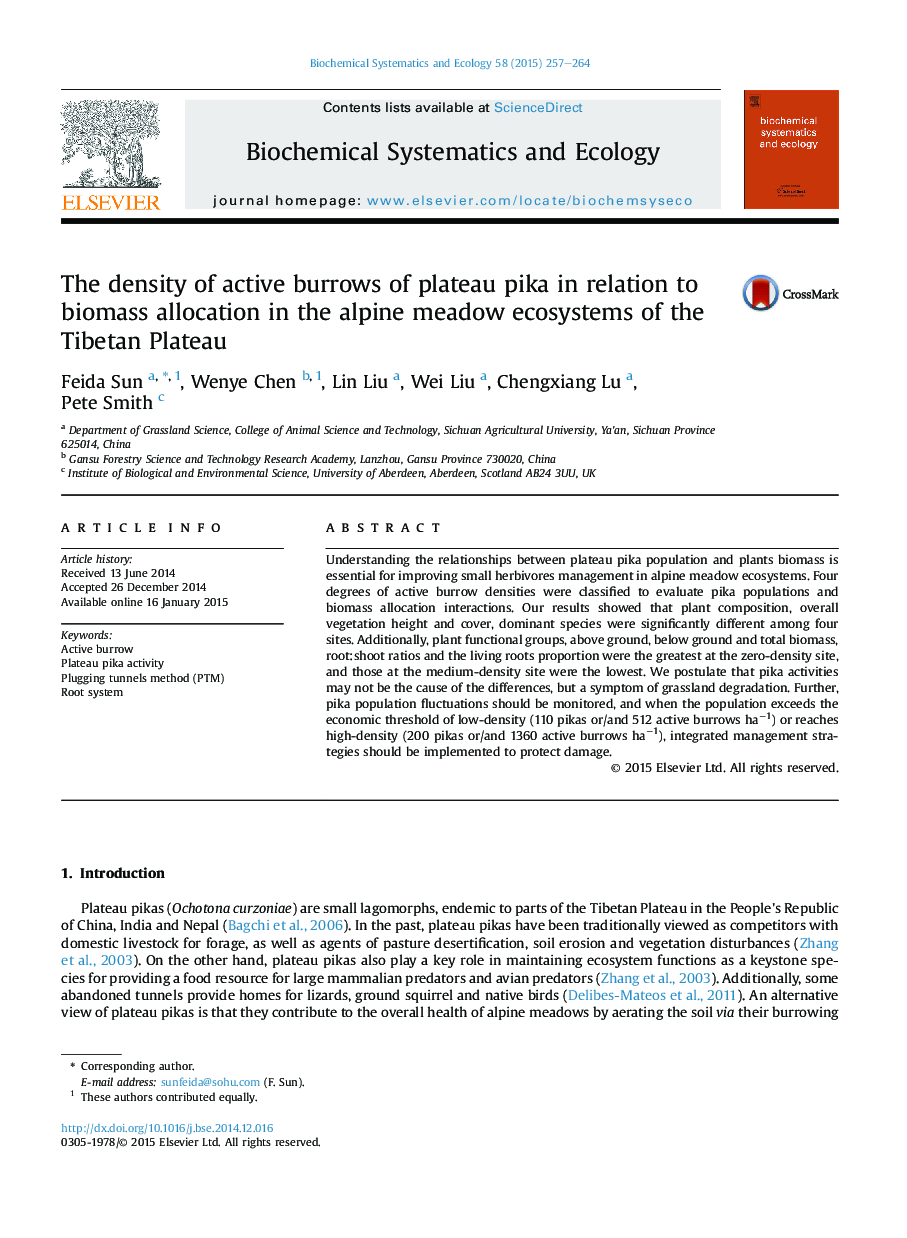| Article ID | Journal | Published Year | Pages | File Type |
|---|---|---|---|---|
| 1353893 | Biochemical Systematics and Ecology | 2015 | 8 Pages |
•We define four degrees of plateau pika active burrow density.•We evaluate plateau pika populations and plant biomass allocation interactions.•We postulate that plateau pika activities may be a symptom of grassland degradation.•Pika population with low-density would be as an economic threshold to alpine meadow.
Understanding the relationships between plateau pika population and plants biomass is essential for improving small herbivores management in alpine meadow ecosystems. Four degrees of active burrow densities were classified to evaluate pika populations and biomass allocation interactions. Our results showed that plant composition, overall vegetation height and cover, dominant species were significantly different among four sites. Additionally, plant functional groups, above ground, below ground and total biomass, root:shoot ratios and the living roots proportion were the greatest at the zero-density site, and those at the medium-density site were the lowest. We postulate that pika activities may not be the cause of the differences, but a symptom of grassland degradation. Further, pika population fluctuations should be monitored, and when the population exceeds the economic threshold of low-density (110 pikas or/and 512 active burrows ha−1) or reaches high-density (200 pikas or/and 1360 active burrows ha−1), integrated management strategies should be implemented to protect damage.
